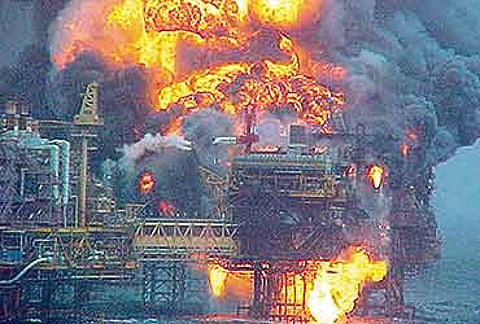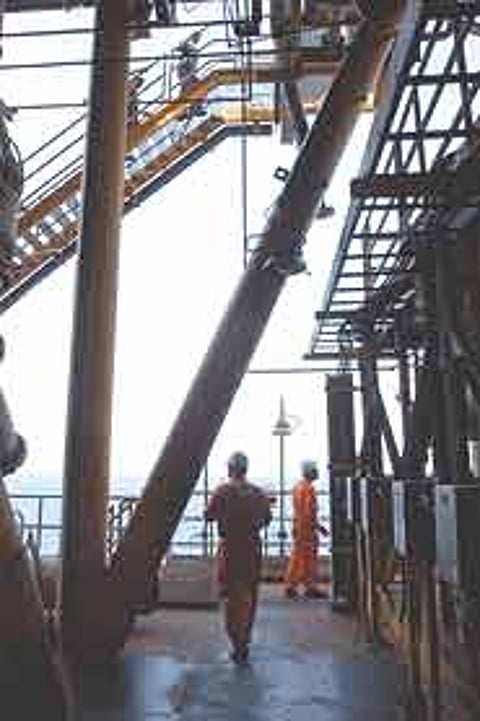Bombay Nigh
Last year's offshore fire struck home in more than one way. Bombay High is still coping.

ONGC employees' tenacity and doggedness can be gauged from the fact that supplies from BHN were crip-pled only for a month and, thereafter, 70 per cent of the output was restored right away. "Now, 90 per cent of the production is back on track," says M.K. Hazra, deputy GM, Bombay High. The BHN staff returned to the MNW site within days and found ways to restart production. One of the critical reparation areas was to divert pipelines that connected 13 unmanned drilling platforms to BHN and the ones connecting BHN to the main 504 km Mumbai-Uran pipeline, which carries crude to ONGC's processing unit in Uran. "These people have etched a mental map of the pipeline network and can spot an unused line without having to consult any monitoring systems," says one of Bombay High's field production supervisor. This explains the remarkable ease with which production bounced back to near normal.
To temporarily replace the BHN platform, until a new one is built, ONGC will hire a floating vessel, Crystal sea, for five years. This is probably the quickest way to reach full production. Its managers say the Norwegian firm, Sea-Tanker, which will charter the vessel, will charge Rs 160 crore a year and the floating facility will be operational this month.
But it was on safety-related issues that ONGC was found wanting. For instance, communications got jammed as there was only one system for Bombay High and, unfortunately, BHN was the mother station for offshore platforms. It's now, with the benefit of hindsight, that ONGC has started installing backup networks on platforms, says Mridul Saikia, infocomm head. The central onshore hub in Mumbai also failed during the accident and money is being pumped to build a standby unit to facilitate an instant switchover during any crisis. An upgradation is in progress to enable shutdown of unmanned offshore platforms in real time during an accident. All this indicates ONGC's communication system had no in-built fallback mechanism.

Bad luck and lack of infrastructure hampered the rescue operations. On July 26, a day before the accident, heavy rains lashed Mumbai and submerged rescue helicopters at ONGC's Juhu helipad. That was the only parking facility it had and it was left to the four choppers located offshore to jump into the rescue operation. In addition, Juhu didn't have night landing facilities. It was left to the coast guard to take charge of the operations. Post-accident, even the ONGC's CMD, Subir Raha, admitted that there was a need to upgrade the infrastructure at Juhu and build back-up chopper landing facilities at Uran and Nhava. That's happening and the PSU is increasing the height of the Juhu helipad by a metre, apart from adding 23 additional choppers to its existing fleet.
What's frightening is the number of people present on the platform that evening, the actual casualty figures and the realisation that more lives could have easily been lost in the fire. As an afterthought, ONGC is taking steps to avoid casualties in the future. To start with, it has decided that there'll be no resident staff on the processing platforms. Earlier, the employees lived in quarters on the processing platform. Now, they'll be relocated to separate wholly-residential platforms. The process is still on. Babu says this will ensure that hazardous and combustible crude is not present close to the living areas.
The decisions taken in the past eight months hint that ONGC has a long way ahead to sort out the safety issues. Company officials say that nearly a third of the safety recommendations made in the March 2003 audit are still being implemented. Just over a month after the Bombay High fire, a blowout occurred in an exploratory well in the Krishna-Godavari basin. In August 2003, a chopper crash killed 27 people and employees demanded the resignation of CMD Raha. In 2001, the company found that the chiefs and second-in-commands in seven of its offshore supply vessels didn't have legitimate licences. Such instances, although their numbers have come down, can only harm ONGC's image.
Tags